Complete Analysis on DWDM Technology
DWDM (Dense Wavelength Division Multiplexing) is a key technology in optical communication, enabling the transmission of multiple data streams over a single fiber by utilizing different wavelengths. This boosts network capacity and efficiency, meeting the growing demand for high-speed data transmission. DWDM plays a vital role in telecommunications infrastructure, offering significant advancements in data transmission capabilities. This article provides a comprehensive introduction to DWDM in optical fiber communication.
What Is DWDM Technology?
DWDM stands for Dense Wavelength Division Multiplexing, which is an optical multiplexing technology used to increase bandwidth over existing fiber optic backbones. The “dense” here refers to the fact that DWDM technology supports more than 80 separate wavelengths, each about 0.8 of a nanometer (nm) wide on a single optical fiber.
Working Principle
DWDM technology increases the network capacity and makes efficient use of bandwidth. The data from various different sources is put together on optical fiber in which each signal travels at the same speed on its own light wavelength. At the receiver end, every channel is demultiplexed into original source, therefore different data formats with different data rates such as Internet data, Synchronous Optical Network data (SONET), and asynchronous transfer mode (ATM) data can be transmitted together at the same time through one optical fiber. The transmission capability of DWDM is 4 to 8 times TDM (Time Domain Multiplexing) and here EDFAs (Erbium doped optical amplifiers) are deployed to boost the strength of the signal. The signal can be transmitted to more than 300 km before regeneration.
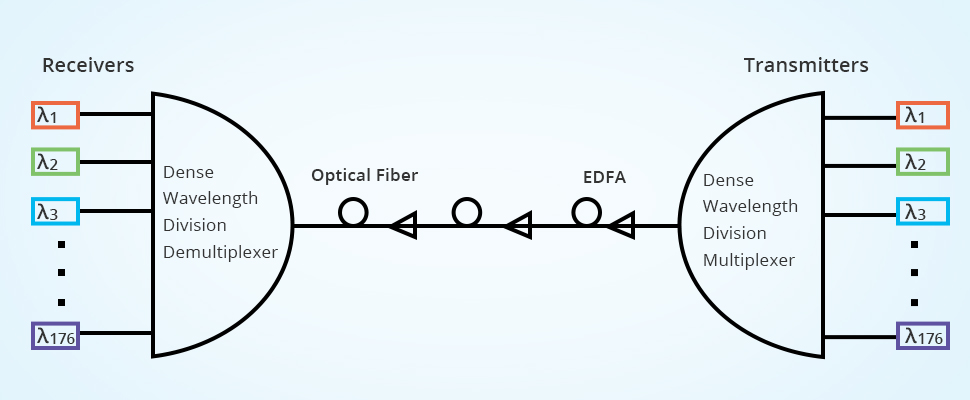
Figure 1: The principle of DWDM technology
Applications
-
DWDM can expand capacity and serve as backup bandwidth without installing new fibers, thus it is ideal for long-distance telecommunication services.
-
DWDM technology can also be used in various networks like sensor networks, remote radar networks, telespectroscopic process control networks and many more.
-
By using only two fibers, 100% protected ring with 16 separate communication signals can be constructed by deploying DWDM terminals as these are self-healing rings.
-
To meet the demand in a fast-growing industrial base, DWDM network can be used for existing thin fiber plants as these plants cannot support high bit rates.
Benefits
-
Transparency—Because DWDM architecture is based on a physical layer, it can transparently support both TDM and data formats such as ATM, Gigabit Ethernet, ESCON, and Fibre Channel with open interfaces over a common physical layer.
-
Scalability—DWDM network can leverage the abundance of dark fiber in many metropolitan areas and enterprise networks to quickly meet demand for capacity on point-to-point links and on spans of existing SONET/SDH rings.
-
Dynamic provisioning—Fast, simple, and dynamic provisioning of network connections allow providers to provide high-bandwidth services in days rather than months.
Backbone DWDM Network Structures
The DWDM-based network structures can be divided into three classes, which are simple point-to-point DWDM links, DWDM wavelength routing with electronic TDM and switching/routing backbone network and all optical DWDM network.
1. Simple Point to Point DWDM Link
In this DWDM architecture, the electronic nodes can be SONET/SDH switches, Internet routers, ATM switches, or any other type of network nodes. The DWDM node consists of typically a pair of wavelength multiplexer / de-multiplexer (lightwave grating devices) and a pair of optical-electrical/ electrical-optical converters. Each wavelength channel is used to transmit one stream of data individually. The DWDM wavelength multiplexer combines all of the lightwave channels into one light beam and pumps it into one single fiber. The combined light of multiple wavelengths is separated by the demultiplexer at the receiving end. The signals carried by each wavelength channel are then converted back to the electrical domain through the O/E converters (photo detectors). In this way, one wavelength channel can be equivalent to a traditional fiber in which one light beam is used to carry information. It is worth noting that the wavelength channels in one fiber can be used for both directions or two fibers are used with each for one direction.
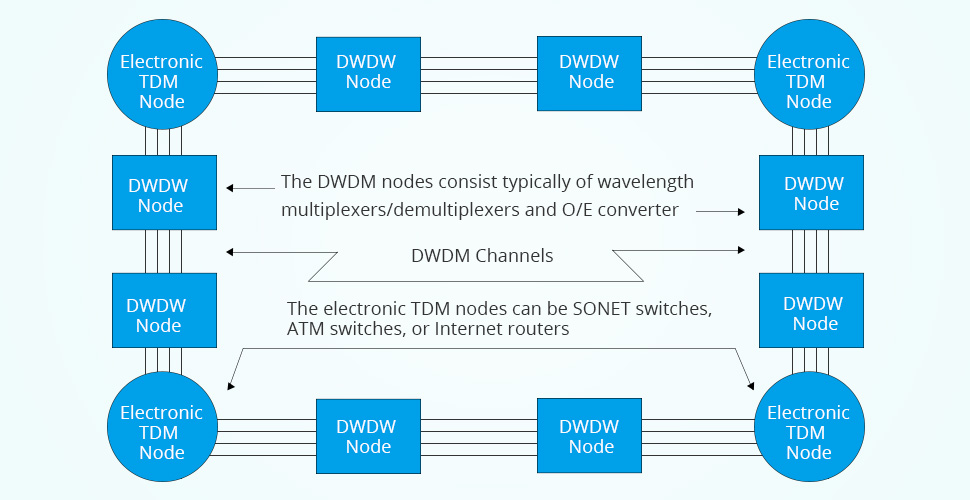
Figure 2: Point to Point DWDM Link
2. Wavelength Routing With Electronic TDM
In this structure, wavelength routers are used to configure or reconfigure the network topology within the optical domain and the TDM network nodes are used to perform multiplexing and switching in the electrical domain. This combined optical and electrical network architecture can be applied in SONET/SDH in which the electrical TDM network nodes would be SONET switches, or in the Internet in which the electrical TDM network nodes would be the Internet routers. The architecture can also be used in an ATM network where the electrical TDM network nodes would be ATM switches.
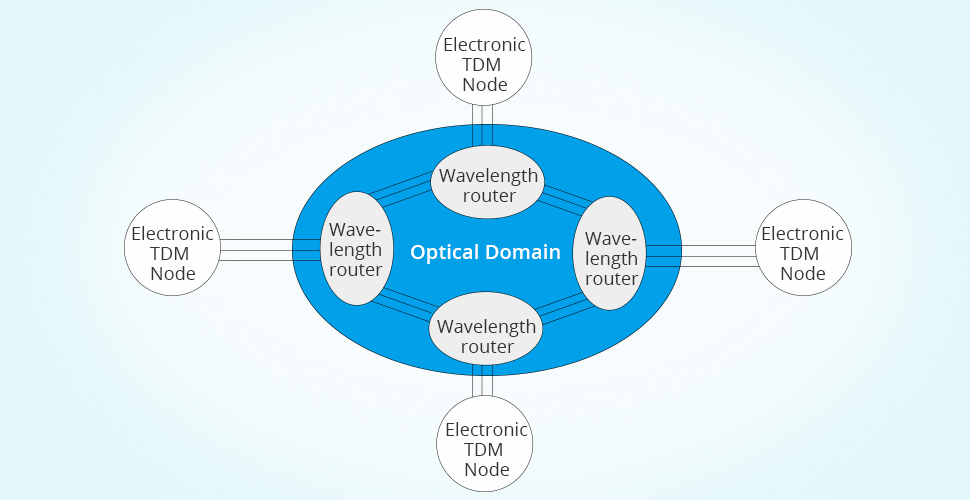
Figure 3: Wavelength Routing with Electronic TDM
3. All Optical DWDM Network
It is seen that the electrical TDM/switching nodes can be of any kind, such as SONET/SDH switches, Internet routers, and ATM switches. This indicates that the all-optical TDM nodes in the all-optical architecture can be optical SONET/SDH switches, or all-optical ATM switches, or all-optical Internet routers. Different types of all-optical TDM/switch nodes can also be in one network, provided the protocol conversions are implemented. In fact, the optical TDM/switch node and the wavelength router in one routing site can be combined into one all-optical switching node that not only forwards packets through time domain multiplexing but also selects the light path intelligently according to the availability and traffic loads of the links.
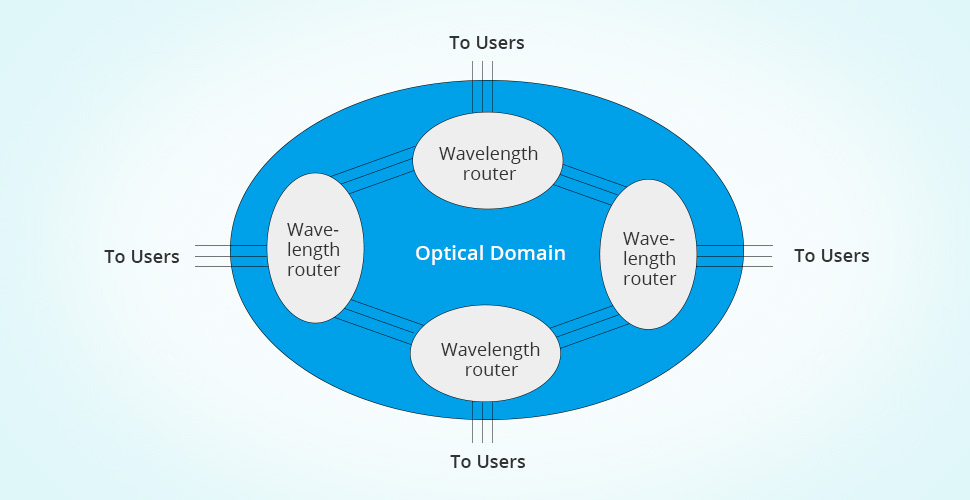
Figure 4: All Optical DWDM Network
Deploy DWDM Over CWDM Network
In the previous text, we have fully discussed DWDM technology and DWDM networks. CWDM used to be a more popular low-cost entry point for many customers. However, as the need for capacity grows and the service rate increases, there is a demand to increase the capacity of existing CWDM networks. The principle of deploying DWDM solution over CWDM network lies in the fact that DWDM wavelengths are actually within the CWDM wavelengths range as shown in the Figure 5. Thus, the DWDM network can be connected to CWDM network via the CWDM channels of 1470 nm, 1490 nm, 1510 nm, 1530 nm, 1550 nm, 1570 nm, 1590 nm, and 1610 nm. In most cases, the 1530nm and 1550nm channels are suggested for the combination of CWDM and DWDM systems to increase the capacity of the existing CWDM fiber optic network.
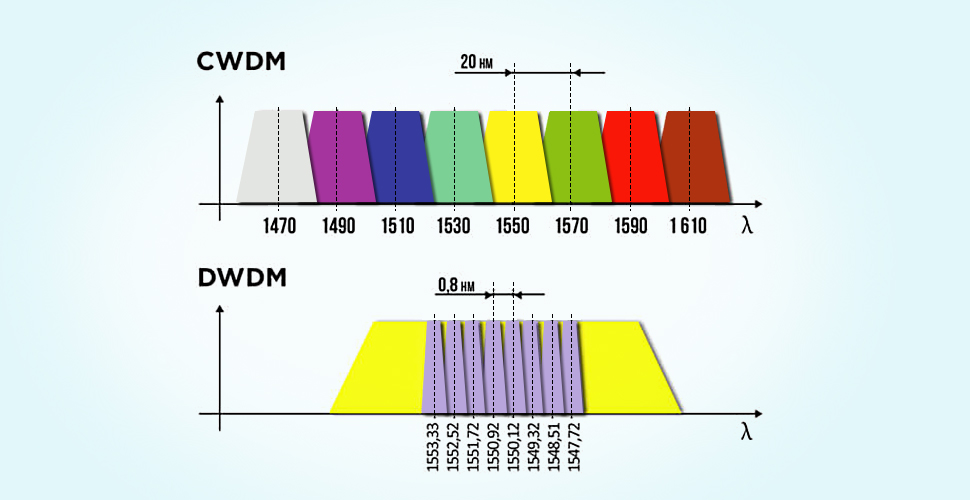
Figure 5: DWDM and CWDM Wavelengths
To combine the DWDM wavelengths with CWDM wavelengths, both CWDM MUX/DEMUX and DWDM MUX/DEMUX are used. The following picture shows the connection methods for hybrid CWDM and DWDM by using 1550nm channel. On both ends of the fiber link, a CWDM MUX/DEMUX and a DWDM MUX/DEMUX with corresponding wavelengths are deployed. Connect the line port of the DWDM MUX/DEMUX to the 1530nm/1550nm channel port of the CWDM MUX/DEMUX, the DWDM wavelengths can be added to the existing CWDM network.
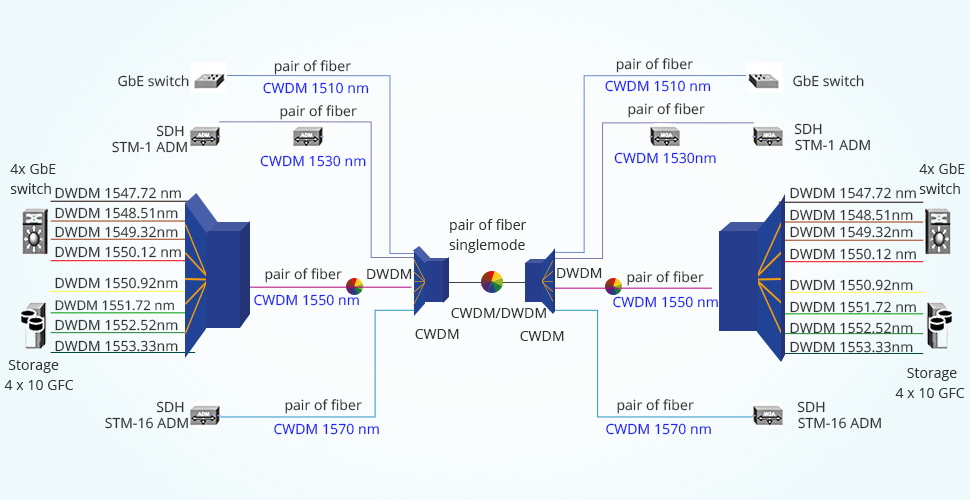
Figure 6: Build DWDM over CWDM Network
The wavelengths should be carefully considered during the selection of the CWDM MUX/DEMUX and DWDM MUX/DEMUX. As above mentioned, wavelengths of 1530 nm and 1550 nm are suggested to be used for the CWDM and DWDM hybrid. The following picture shows the suggested wavelengths for CWDM and DWDM hybrid. If the 1530nm port is to be used, the DWDM MUX/DEMUX channel ports are suggested to range from 1529.55 nm to 1536.61 nm. For 1550nm port, the channel ports of the DWDM MUX/DEMUX are suggested to range from 1545.32 nm to 1557.36 nm.
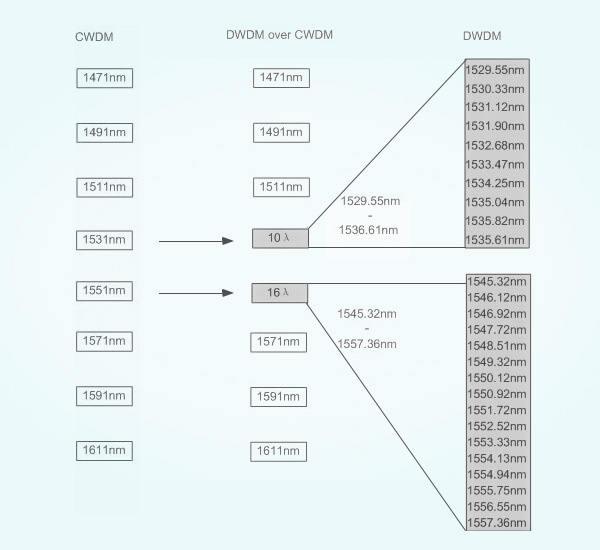
Figure 7: Suggested Wavelengths for CWDM and DWDM Hybrid
Practical Considerations in Deploying DWDM Network
When deploying a DWDM network, customers may encounter some questions that will affect their choices of vendor, equipment type, design and so on. Some of these FAQs are as follows:
Is the DWDM system compatible with existing fiber plant?
Although the majority of installed fiber such as SM fiber and NZ-DSF can support DWDM network, there are still some types of older fiber that are not suitable for DWDM use. So if new fiber must be deployed, choose the one that supports future growth, particularly when DWDM systems will expand into new wavelength regions with higher bit rates.
What is my migration and provisioning strategy?
Because DWDM technology is capable of supporting massive growth in bandwidth demands over time without forklift upgrades, it represents a long-term investment. Both point-to-point and ring topologies can serve as foundations for future growth. Planning should allow for flexible additions of nodes to meet the changing demands of customers.
What network management tools can I use?
A comprehensive network management tool will be needed for provisioning, performance monitoring, fault identification and isolation, and remedial action. Such a tool should be standards-based (SNMP, for example) and able to inter-operate with the existing operating system.
What is my strategy for protection and restoration?
Designing a protection strategy is a complex process and many considerations should be taken into account. There are both hard failures and soft failures. The former must be addressed through redundancy at the device, component, or fiber level. The latter must be addressed by the system through intelligent wavelength monitoring and management. Protection and survivability strategies depend upon service type, system, and network architectures. In many networks, they also depend on the transport protocol.
The Historical Evolution and Future Trend of DWDM Technology
The development of Dense Wavelength Division Multiplexing (DWDM) technology began in the early 1990s primarily to augment the capacity of optical fiber networks. Initially utilized for this purpose, DWDM has undergone significant advancements over the decades in wavelength count, frequency spacing reduction, and improvements in wavelength modulation techniques. These advancements have substantially increased network capacity and efficiency.
As digital demands and data traffic continue to surge, DWDM technology is poised for further evolution and refinement. Future trends encompass higher wavelength densities, wider spectrum utilization, lower power consumption, and increased data transmission rates. With the rise of 5G and the Internet of Things (IoT), DWDM will play an increasingly critical role in supporting large-scale data transmission and processing. Additionally, integration with emerging technologies such as photonic computing will further drive DWDM advancements, extending its applications into broader domains including cloud computing, healthcare, and smart cities. In summary, DWDM technology will persist as a crucial enabler in optical communication and is set to become even more indispensable in the digital era ahead.
Summary
In essence, DWDM technology revolutionizes optical communication by cramming multiple data streams into a single fiber using various wavelengths. It's the backbone of high-capacity networks, continually evolving for even faster, more efficient data transmission. DWDM's future promises even denser wavelengths, wider spectrum use, and lower power consumption, ensuring it remains at the forefront of digital connectivity.
You might be interested in
Email Address

-
PoE vs PoE+ vs PoE++ Switch: How to Choose?
Mar 16, 2023














